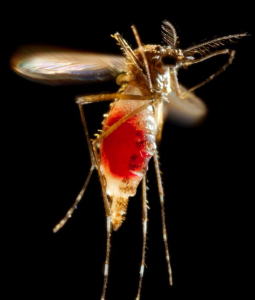Updated Guidelines for Healthcare Providers Caring for Infants or Children with Possible Zika Virus Infection
CDC has updated its interim guidelines for healthcare providers who care for infants and children with possible Zika virus infection. The guidance, which has been expanded to cover children up to 18 years old, includes these updates:
- A new recommendation that infants with typical head size, normal ultrasounds, and a normal physical exam born to mothers who traveled to or lived in areas with Zika do not require any special care beyond what is routinely provided to newborns.
- A new recommendation to suspect Zika virus disease in children, in addition to infants, who have traveled to or lived in an area with Zika within the past 2 weeks and have at least two of these symptoms: fever, rash, red eyes, or joint pain. Because transmission of Zika virus from mother to infant during delivery is possible, this recommendation also applies to infants during the first 2 weeks of life whose mother traveled to or resided in an affected area within 2 weeks of delivery.

Parents in families traveling to or living in areas with Zika can help protect their children by strictly following steps to prevent mosquito bites. Based on what we know now, Zika virus disease in children, as for adults, is usually mild. As an arboviral disease, Zika virus disease is a nationally notifiable condition; healthcare providers should report suspected cases to their local, state, or territorial health department. CDC’s guidance will continue to be updated as we learn more.
WHO Zika situation report
- Between January 2007 and 17 February 2016, a total of 41 countries and territories reported local (autochthonous) transmission of Zika virus, including those where the outbreak is now over. One country (United States of America) reported a locally acquired case without vector-borne transmission, likely to have been contracted by sexual contact, and indirect evidence of local transmission has been documented in six additional countries. Two new countries/territories have reported local transmission in the week running up to 17 February 2016 (Aruba and Bonaire).
- Geographical distribution of Zika virus has steadily broadened since the virus was first detected in the Americas in 2015. Zika transmission has been reported in 28 countries/territories. The discovery of Zika virus in additional countries within the geographical range of competent mosquito vectors — especially Aedes aegypti— is considered likely.
- Six countries/territories (Brazil, French Polynesia, El Salvador, Venezuela, Colombia and Suriname) have reported an increase in the incidence of cases of microcephaly and/or Guillain-Barré syndrome (GBS) following a Zika virus outbreak. Microcephaly has so far been reported only from Brazil and French Polynesia. Puerto Rico and Martinique have also reported cases of GBS associated with Zika virus infection, but without evidence of an overall increase in the incidence of GBS.
- Evidence that neurological disorders, including microcephaly and GBS, are linked to Zika virus infection remains circumstantial, but a growing body of clinical and epidemiological data possibly leans towards a causal role for Zika virus.
- The global prevention and control strategy launched by WHO as a Strategic Response Framework (SRF) encompasses surveillance, response activities, and research. Following consultation with partners and taking changes in caseload into account, the SRF will be updated at the end of March 2016 to reflect epidemiological evidence coming to light and the evolving division of roles and responsibilities for tackling this emergency.
- From 2007 to 11 February 2016, Zika virus transmission was documented in a total of 48 countries/territories (Fig. 1 and Fig. 2). This includes 36 countries which reported local transmission between 2015 and 2016, six countries with indirect evidence of viral circulation, five countries with reported terminated outbreaks and one country with a locally acquired case but without vector-borne transmission (Table 1). Two new countries/territories – Aruba and Bonaire – reported autochthonous transmission in the week running up to 17 February 2016.
WHO: Maintaining a safe and adequate blood supply during Zika virus outbreaks
These guidelines have been developed in recognition that infection with Zika virus may present a risk to blood safety, and in consideration of the declaration on 1 February 2016 by the WHO Director-General of a Public Health Emergency of International Concern with regard to clusters of microcephaly and other neurological disorders, potentially associated with Zika virus. Currently there is limited knowledge of Zika virus biology and lack of definitive evidence of a link between infection and potential complications. These guidelines will be regularly reviewed and updated as new information becomes available.
Read the entire guideline HERE
WHO media briefing audio HERE
Podcast: Play in new window | Download
Subscribe: Apple Podcasts | RSS


One thought on “Zika virus: CDC pediatric guidelines, WHO situation report and blood safety guidance”